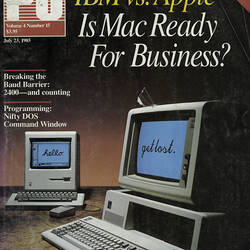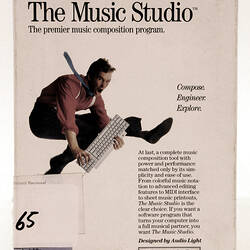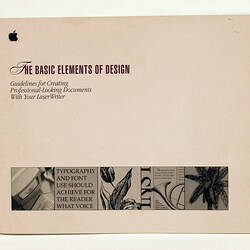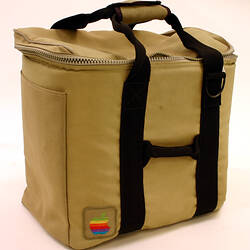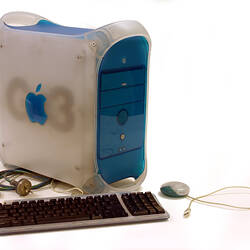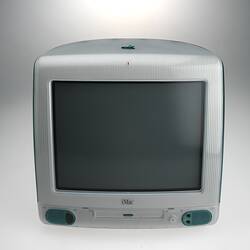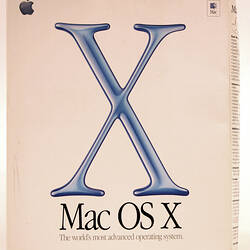Steve Jobs' return to Apple saw him refocus the company's energies on its fundamental philosophies: innovative engineering coupled with legendary ease of use. Jobs simplified Apple's product line; the target markets became simply domestic and professional. The first new computer under his reign bore remarkable similarity to the original Macintosh produced 14 years earlier, and acknowledging the growth of the Internet, it was named the iMac. The iMac included software that enabled an uninitiated person immediate access the internet. It was the first all-in-one box to incorporate a modem. It also marked a watershed in industrial design development because of the use of modern coloured transparent plastics to achieve the all-in-one concept. With its curved lines and blue colour, the iMac was a revolutionary step away from the "beige box" that was the computer industry standard design.
The iMac shocked the PC industry by what it left out as much as what it included. Designed under the guidance of VP of industrial design, Jonathan Ive, it eschewed the floppy disk, but included a CD drive and USB connections (SCSI was dropped). USB was the only means of connecting peripherals, which led to an explosion of new devices using this connection. By using USB connections, peripherals such as digital cameras, scanners and printers became part of what Jobs terms the Digital Hub concept, with the PC acting as a central connecting device for a variety of digital peripherals.
The Blue and White Power Mac G3 was a triumph of industrial design, a professional desktop machine. The period 1998 onwards saw a renewed emphasis on industrial design at Apple.
The period around 1999 was characterised by the term 'Megahertz war'. It was a period in which chip speed was regarded as the basis for the promotion of computer sales. This promotion relied on misleading information about chip speed; the effectiveness of a computer depends on more factors than just chip speed.
Jobs replaced the operating system with a UNIX-based system, legendary for its robustness and stability. Mac OS X was developed by combining a UNIX foundation with a new interface, maintaining Apple's ease of use. OSX 10.0 was released in March 2001, but a server version was released in 1999.
More Information
-
Keywords
-
Authors
-
Article types


